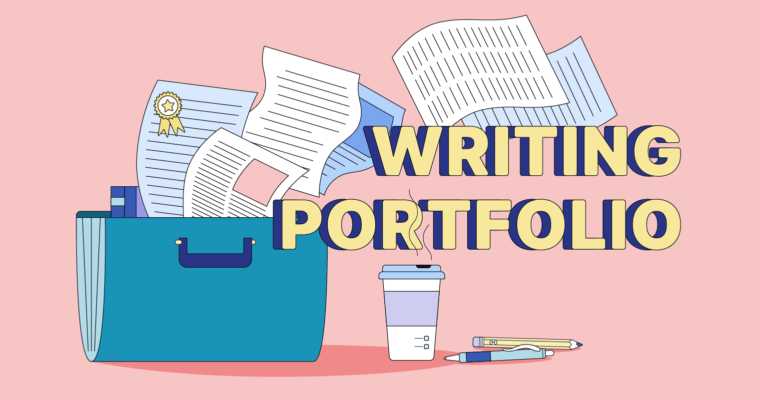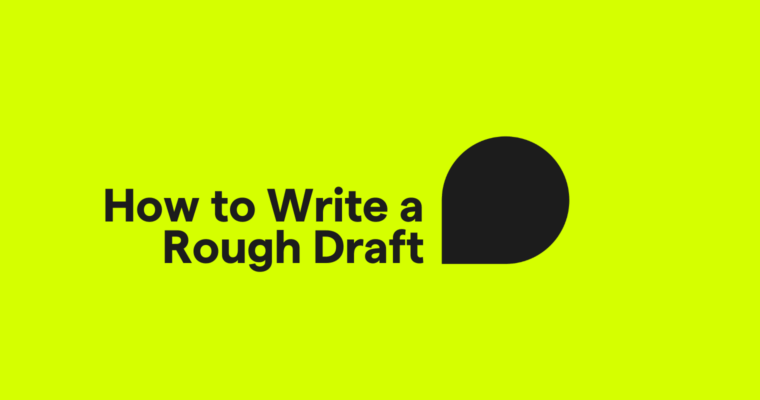
“Show, don’t tell,” the writerly dictum goes. Don’t just tell readers your main character was intrigued—use your words to show me the look on her face. Don’t just say the island was beautiful—paint a word picture of turquoise waves and gently swaying palms.
Similar advice holds when you say you’re a writer. Don’t just tell folks that—show what a crafty and capable wordsmith you are with a well-rounded writing portfolio.
Whether you’re about to finish school, looking to change fields, or years into a meandering freelance career, your writing portfolio exists to showcase your talents. It’s key to making the right impression with potential employers and mentors, as well as applying to programs to refine your skills. This matters whether you specialize in fiction, journalism, UX writing, poetry, or beyond.
The basic writing portfolio
Let’s say you’re a college student hungry for an internship in a scrappy local newsroom, and a professor who’s friendly with an editor there has given you their email address. You’ve written a few stories for your campus newspaper—nothing amazing, but you’re just a cub starting out—and now this editor wants to see samples of your work. Suddenly your palms are sweaty.
Great news: You’ve already done the hard part by writing up a few stories. All your portfolio has to do is highlight some of your best work and make it easy to navigate. Achieving this doesn’t have to be a complicated undertaking—it can literally be an email.
Many writing portfolios are websites—we’ll talk more about that in a minute. But in this case, since you’re corresponding directly with the editor, you can simply attach a few PDFs (yes, this is precisely how I got my first internship years ago) or a bullet list with links to around three of your favorite pieces (yes, this approach worked nicely when I landed a lovely ongoing gig with a client).
In other words, your writing portfolio doesn’t have to arrive as a gilded package that illuminates the face of anyone who opens it; it just needs to communicate Hey, here are some samples of my writing to give you a sense of what I can do for your organization.
The comprehensive writing portfolio
If you have time and a budget, your writing portfolio can balloon into not just a writing project unto itself but also one that incorporates your skills in everything from web design to photo editing.
A high-end writing portfolio—one with a slick web domain, perhaps built and hosted through a paid service like Bluehost, Wix, or Squarespace—can be a sort of calling card that you include in your social bios, email signature, and résumé header.
Top-flight examples of this type of portfolio go beyond the humble assortment of writing samples. If you’re a UX writer with a storied career, you might proudly display the logos of big-name companies you’ve worked with. A long-form writer hoping to secure a book deal will undoubtedly list every respectable magazine to whom they’ve ever sold a word.
It can also be helpful to write a few paragraphs spelling out your portfolio’s unifying theme. Give a bit about your background and what you’re about, maybe along with why you’re uniquely qualified to steer into a new kind of work. This isn’t wholly different from a cover letter: It’s a chance to highlight the coolest parts of your journey while explaining how they’ve prepared you for whatever great thing you’re poised to accomplish next.
If you go this route, be sure to update whenever any particularly snazzy new work of yours goes live and to fine-tune your portfolio whenever you’re looking for new clients or have just applied for a new gig or program.
Writing portfolio FAQs
Do I need a writing portfolio?
If you’re looking to establish writer street cred, then yes. Whether you’re a journalist, a writer for tech companies, or a poet, your writing portfolio shows people you’re the real deal and have the ability and experience to prove it.
Who’s my writing portfolio for?
Whether you’re a fiction writer applying to prestigious workshops or a freelance reporter pitching magazine editors, your portfolio is there to establish credibility with anyone you want to take you seriously as a writer.
Does building one require web design skills?
Not really. If you want to show discerning readers you possess more than a Myspace-level command of HTML, go for it—but know that an array of online services like Clippings.me and Journo Portfolio make setup straightforward if web design is not your thing.
Do I need to spend money to build a writing portfolio?
If you want to go the route of a fancy domain name and premium web hosting service, you certainly can, but don’t think of this as a requirement. You can get started on services like those mentioned above for zero dollars.
What goes in my portfolio?
In short, work that speaks to the great writing you’re capable of and want to do more of. It also doesn’t hurt if something you worked on has won an award or involves a publication or organization most people have heard of.
What if my past writing isn’t relevant to what I want to do now?
Try to show how your skills and experience can translate into a new arena. For example, if you want a job as a science writer but mostly have experience as a hard-news journalist, use your portfolio to highlight subject-adjacent stories you wrote, your understanding of key issues, and your general ability to communicate complex matters clearly.
How expansive does my portfolio need to be?
It depends on where you are in your career and who you’re trying to impress, but if you’re new to writing, it’s generally reasonable to err on the side of brevity. The right three to five portfolio pieces might leave a more lasting impression than a dozen that feel scattershot. Then again, if you have a lot of great work worth showing off, don’t feel like you have to whittle it down for the sake of some arbitrary cap.
Will a writing portfolio solve all of my problems?
No. But if you’re the type of writer who experiences occasional self-doubt, then seeing a bunch of the best things you’ve written all neatly arranged together might help you feel slightly better—and a little more prepared to tackle your next great project. In that respect, your portfolio might be as much for yourself as it is for anyone else.






